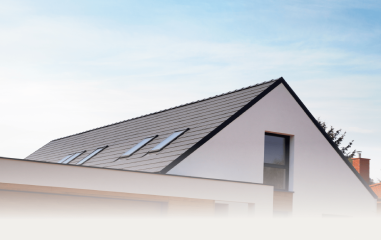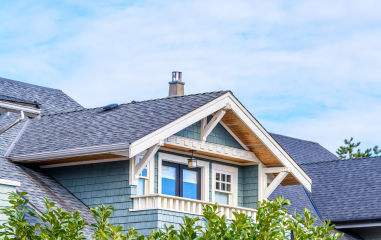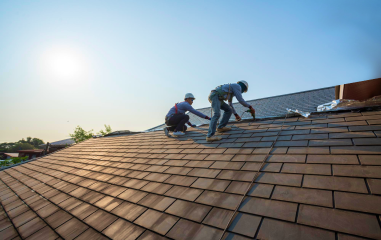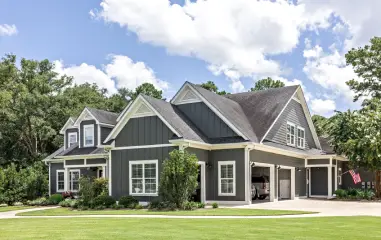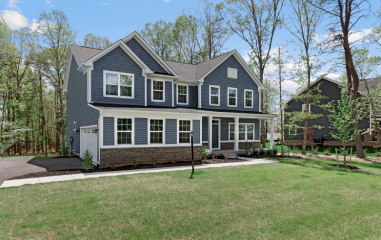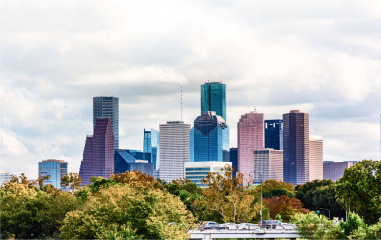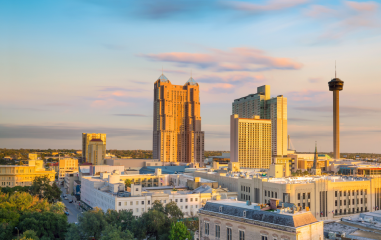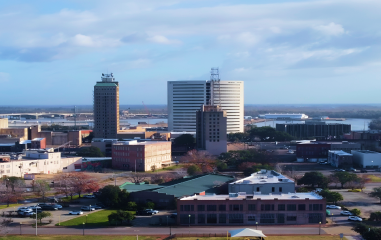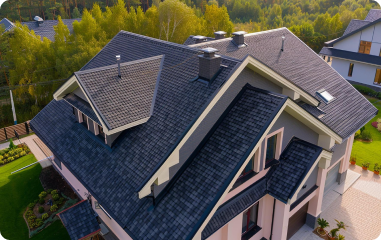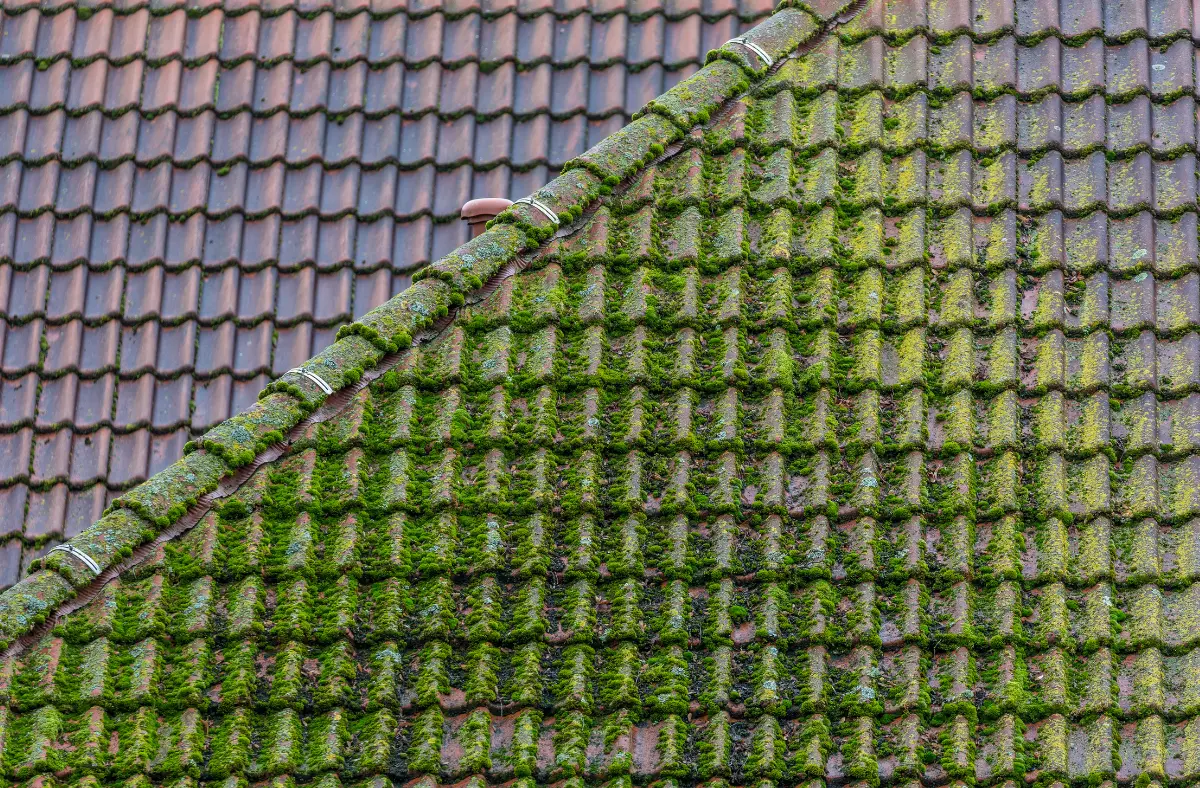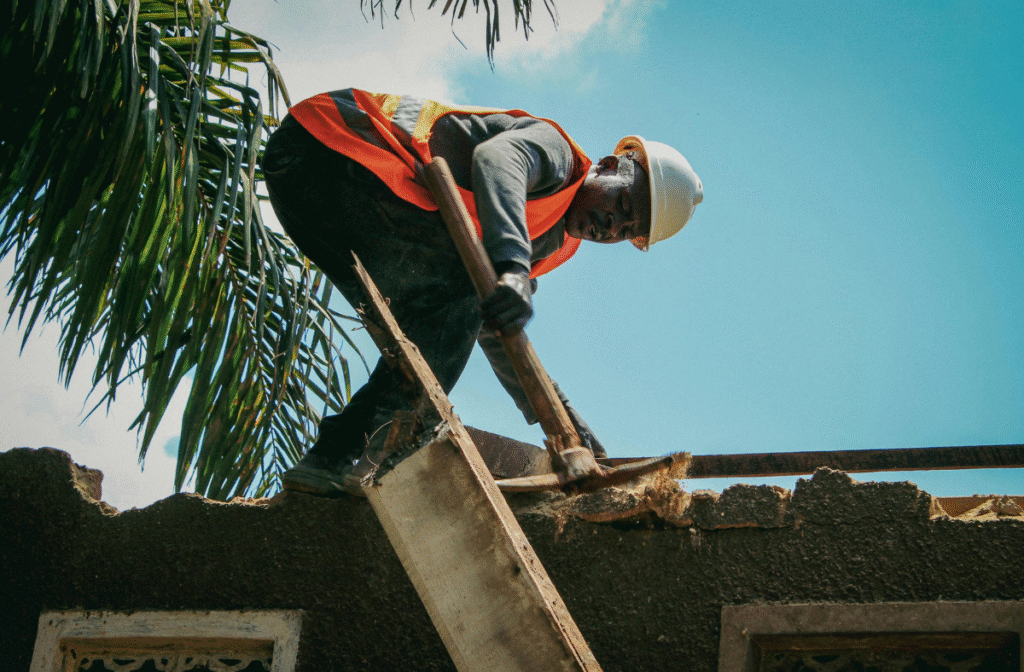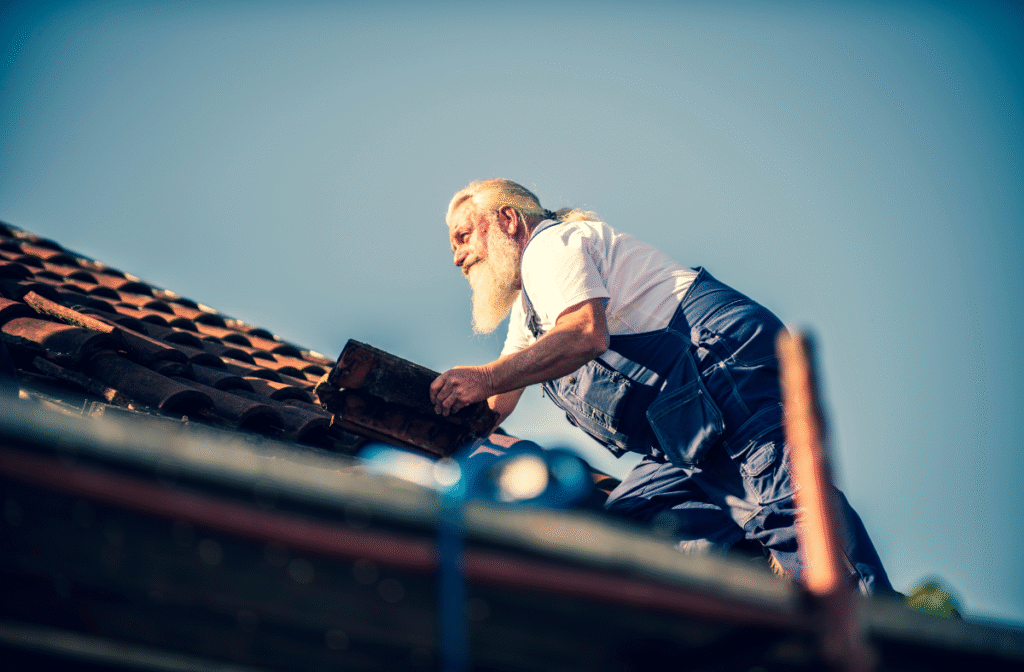Moss might seem harmless, but when it shows up on your roof, it’s a different story. That green growth clinging to your shingles can actually cause serious damage over time, leading to leaks, rot, and costly repairs. It doesn’t just affect your home’s curb appeal; it can shorten the lifespan of your roof if left untreated.
In this article, we’ll break down what causes moss to grow on your roof, how to get rid of moss on your roof, and why persistent moss may be a red flag that it’s time to replace your roof altogether.
Whether you’re dealing with a light dusting or a full-blown moss invasion, here’s what every homeowner needs to know.
Table of Contents
What Causes Moss to Grow on Roofs?
Let’s talk about what causes moss to grow on roofs. There are a number of factors that can lead to this happening.
First, there’s moisture and humidity. Shaded, damp environments provide ideal conditions for moss to grow on your roof. If you live in a region with high humidity or frequent rain, your roof may be more susceptible to moss growth.
Debris buildup can be another contributor to moss growing on your roof. Leaves, twigs, and other organic matter can accumulate on your roof and provide the perfect food source for moss to thrive.
If your roof is on the older side, it might be more prone to moss. Older shingles may hold moisture more easily, providing the necessary environment for moss to grow.
Finally, if you live in a heavily wooded area, your roof may be at a higher risk for moss growth. Trees can provide shade and trap moisture on your roof, creating an ideal environment for moss to take hold.
Why Moss Is A Problem For Your Roof
Even though it might not seem like a big deal, moss can cause significant problems for your roof.
It traps moisture against the roof surface, which can lead to water damage and rot. This can weaken the structure of your roof and potentially cause leaks.
In addition, moss can also lift up shingles or tiles, creating gaps where water can seep in and further damage your roof.
Moss also reduces the lifespan of your roof. The longer it’s left untreated, the more damage it can cause and the costlier it will be to repair or replace your roof.
On top of all this, moss can make your roof look ugly and decrease your home’s curb appeal. It makes it look like your home is poorly maintained.
How to Safely Remove Moss from a Roof
Now let’s talk about how to get rid of moss on your roof.
First, let’s talk about what NOT to do. Don’t pressure wash your roof. This can damage the shingles and cause even more problems. Also, avoid harsh chemicals like bleach. Not only can these be harmful to the environment, but they can also damage your roof and any surrounding plants or landscaping.
Instead, try these safer methods for removing moss from your roof:
- Use a roof rake or broom to gently sweep away loose moss. Always brush downward to avoid lifting the shingles.
- Use a store-bought roof cleaner specifically designed for removing moss and algae. These cleaners are typically less harsh and more effective than bleach.
- Create a solution of equal parts water and vinegar and spray it onto the affected areas. Let it sit for 15 minutes before rinsing off with a hose.
Treatments should be applied during dry weather. This ensures both their effectiveness and safety. When rinsing a treatment off your roof, use a low-pressure garden hose. This will allow you to clear the moss without damaging or lifting the shingles.
Not sure if you should repair or replace your roof? Give us a call for FREE roof inspection
How to Prevent Moss from Coming Back
Once you’ve gotten rid of the moss, you want to prevent it from coming back. There are a few things you can do to keep moss away.
Trim Back Trees and Branches
Moss thrives in shady and moist areas, so keeping your roof free from excessive shade can help prevent its growth. Trim back any trees or branches that may be casting shadows on your roof. This will also allow more sunlight to reach the roof, which helps keep it dry. It will also help prevent tree damage during storms.
Install Zinc Strips
Another effective way to prevent moss from coming back is to install zinc strips along the peak of your roof. When rainwater runs over the zinc strips, small amounts of zinc are released onto the shingles below. Zinc is a natural fungicide and will kill any spores that try to take root on your roof.
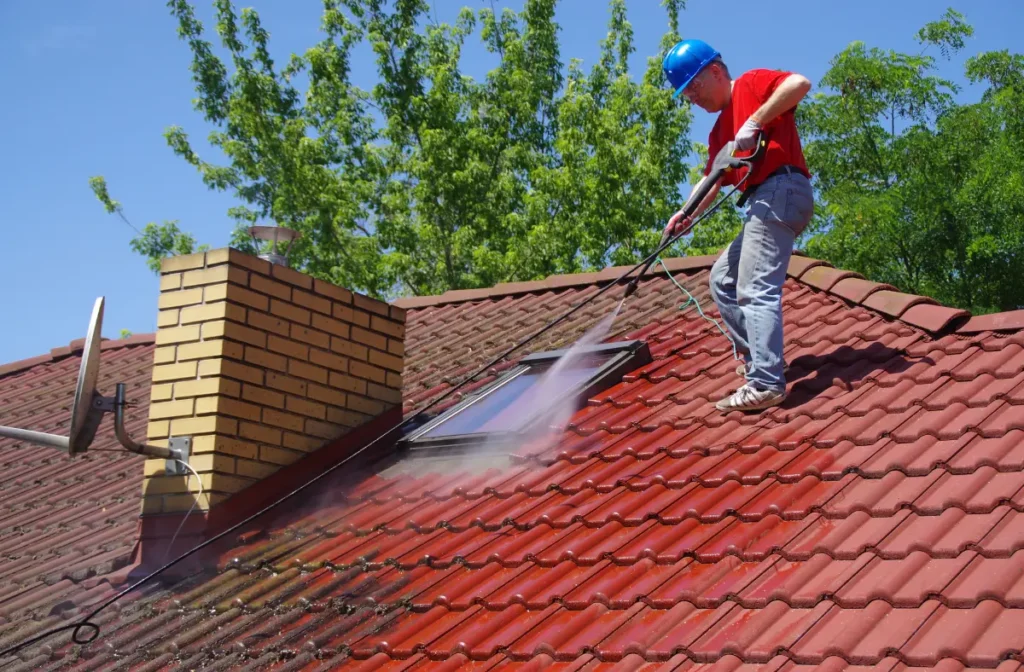
Keep Your Roof Clear of Debris
Regularly cleaning your roof of debris such as leaves, twigs, and branches can also help prevent moss growth. These items can trap moisture on your roof, providing an ideal environment for moss to grow. It’s important to keep your gutters clean as well, as clogged gutters can lead to water pooling on your roof and creating a moist environment for moss to thrive.
Perform Regular Roof Inspections
It can be helpful to perform regular roof inspections to check for any signs of moss growth. Look out for discolored patches or areas of your roof that appear darker than others, as these may indicate the presence of moss. Catching and addressing moss growth early on can prevent it from spreading and causing potential damage to your roof.
When Moss Might Mean You Need a New Roof
Moss on your roof can be an indicator that it might be time for you to get a new roof.
If you see signs of deeper damage, like curling, cracking, or missing shingles, this could be a sign that your roof is reaching the end of its lifespan. Water leaks or visible rot in the attic can also be indicators that your roof has significant damage beyond just moss accumulation.
If your roof is more than 20 years old and has moss on it, that might be another sign it’s time for a new roof. The average lifespan of an asphalt shingle roof is around 20 years, so if your roof is already showing signs of age and deterioration, it’s best to start planning for a replacement.
Also, if you continue to get recurring moss in spite of your maintenance, it might point to trapped moisture or deeper structural issues.
Call A Professional: When DIY Isn’t Enough
If you have concerns about the overall state of your roof, it’s best to have a professional roofing company perform a detailed inspection of your roof. This is especially important if you’re dealing with recurring issues like leaks or moss growth.
At M&M Roofing, Siding, and Windows we offer FREE roof inspections. One of our professional roofers will come to your house and thoroughly inspect your roof, including any areas where moss is growing. They will be able to determine whether there are any underlying problems beyond just moss. Once they’ve completed their inspection, they’ll provide you with a detailed report, indicating exactly what they found and what the recommended next steps are.
If we determine your roof just needs to be repaired, we’ll make that clear. If we think you need a total roof replacement, we’ll provide you with several different options.
We’ve been in business for more than 40 years, have installed more than 20,000 new roofs, and have more than 1,000 positive reviews on Google. If you work with us, you can trust that you’re in good hands.
If you need a new roof or need to repair your roof, give us a call for a free roof inspection!
Final Thoughts
If you see moss growing on your roof, don’t take it lightly. Left untreated, moss can cause serious damage to your roof, leading to costly repairs or even a full replacement. By taking immediate action to remove the moss, you can prevent further damage and extend the life of your roof.
If the moss keeps coming back, it’s best to consult with a professional roofing company that can determine if there are significant underlying issues beyond just moss.
If you’re concerned about the state of your roof, contact us today for a FREE roof inspection. We’ll tell you exactly what’s going on and give you a plan for moving forward.
Don’t wait until it’s too late. Your roof will thank you.
M&M Roofing, Siding, and Windows has been serving Texas homeowners for over 40 years. Call us or complete the request form to schedule a FREE roof inspection.

